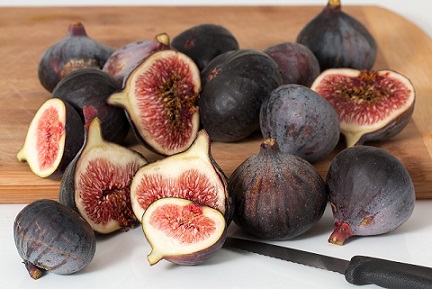IELTS
Speaking Test Sample
& Planning Method 3
In this IELTS Speaking test sample, we’re going to look at the third method I recommend for planning your Part 2 talk. On this page, I’ll also explain the importance of ‘telling a story’.
I call planning method 3, ‘Using the Senses’ and there are several types of cue card topic this strategy can work well for:
- When describing a place
- When describing an experience
- When describing a before and after situation where something has changed
As we learnt on the Speaking test introductory page, having a planning strategy is vital for you to make the most of the 1 minute preparation time the examiner will give you before you begin your 2 minute talk.
Want to watch & listen to this section?
Click on this video.
There’s lots of important information on the introduction page. If you haven’t read it yet, you’ll find it here:
IELTS Speaking Part 2 – 5 Reasons For a Low Score & How To Avoid Them
Method 3 – Using The
Senses
Here’s the cue card we’re going to use to create this third IELTS Speaking test sample.
Describe a food you used to dislike but now
enjoy.
You should say:
- what it is
- what you disliked about it
- how long you disliked it for
and explain what changed so that you now enjoy it.
We’ll go through the planning strategy step by step.
Step 1 – First, read the topic sentence and bullet
points. Then write down a list of the five senses on a piece of paper. Here
they are to remind you:
- sight
- smell
- touch
- taste
- hearing
In the exam, you’ll be given paper on which
to make notes. You’ll be allowed to refer to them
during your talk and you won’t be marked on them.
With this method, I don’t recommend using these words as headings as we did with the questions prompt words when writing notes for IELTS Speaking test sample 1. You’ll find that your ideas won’t fit neatly under the headings. Just use the words as prompts.
Step 2 – Next, keeping the 5 senses words in mind, spend about 30 seconds jotting down all the ideas you can come up with related to the topic. Single words or phrases are fine.
Depending on the specific topic, there might not be something appropriate to write for all senses. Just concentrate on the ones that are relevant.
Here are some sample notes for this cue card. I’ve colour coded them so you can see how they relate to the senses prompt words.
smell touch hearing sight taste

figs
Christmas
brown & sticky
crunchy seeds
strange texture
musty smell
shrivelled up
round box
nibbled one each year
might taste better – didn’t
walking holiday in Spain
great guide
vineyards – tasted different grapes
passed fig tree
picked fresh figs
soft & warm
purple velvety skin
tasted it
delicious
sweet, fresh smell
Step 3 – Now use your notes to create a story to tell the examiner about your topic.
How is a story structured? With a beginning, a middle and an end.
- beginning: an introduction to the subject of your story
- middle: the main event – what happened
- end: a conclusion to neatly round off your story
You should just have time left in your 1 minute preparation to quickly reorganise your notes to put your ideas into a more logical order so that your story flows. You are now ready to give your talk.
I’ve used colour coding again in the IELTS Speaking test sample below, this time to help you identify the different parts of the ‘story’ .
 Fresh figs.
Fresh figs.Step 4 – Give your talk.
Having made good use of your planning time, you’ll have all the ideas in your head ready to talk about and your notes to glance at if you need a reminder. Try not to rely too much on your notes or your fluency will suffer.
Here's our third IELTS Speaking test sample, created from the notes above. Can you identify the vocabulary relating to the five senses?
IELTS Speaking Test Sample – 3
Describe a food you used to dislike but now enjoy.
I have to say that I like most foods and I’m always keen to try new types, especially traditional food in other countries. However, I can think of one thing that I used to really dislike but now absolutely love. It’s something that always used to appear at Christmas time when I was a child – figs.
They came in a round box and were all squashed in. They looked horrible, all brown and shrivelled up, and they had a musty smell. They tasted just as bad as they looked and had a really strange texture, which was part of the problem. You’d bite through the sticky outer layer into crunchy seeds in the centre that stuck in your teeth. …Not nice at all. Each Christmas I’d have a little nibble of one hoping it would taste better than before but, of course, it never did. Dried figs were never going to be my idea of a festive treat.
Then, many years later I went on a group walking holiday in Spain. We had an excellent guide who was keen for us to learn about and experience as much of the local area as possible. There were vineyards everywhere and he would sometimes pick a bunch of grapes so that we could taste the different types used to make different wines.
One afternoon we passed a large fig tree. Our guide started to pick the ripe fruit and hand them around to everyone in the group. I immediately thought of those dried figs at Christmas but quickly realised that what I had in my hand was something completely different. For a start, it was soft and warm with a velvety purple skin. Everyone else was eating theirs so I decided to give it a try as well.
I bit into it and an amazing taste filled my mouth. It’s difficult to describe as it’s not like anything else but it was delicious. I must have had a look of total surprise and delight on my face because suddenly everyone was looking at me and laughing.
Now if anyone asks me if I like figs, I say that I adore them, but only fresh ones. Although I must admit, I’ve never tasted one quite as good as that fig picked straight off the tree in sunny Spain.
As well as providing a framework for your talk, telling a story will also help you to score well for fluency and coherence. This technique works well with many different types of cue card topics and can be used alongside the ‘question prompt’ and ‘brainstorming’ planning methods we've already looked it.
If you haven’t studied them yet, you’ll find links to them below.
 Vineyard in Granada, Spain.
Vineyard in Granada, Spain.
Preparing For Your Test
The only thing that is really going to prepare you for your test is practise and lots of it. Here are some more cue cards that this planning method is ideal for.
Use them to plan and create your own 2 minutes talks.
Describe an exciting experience you’ve had.
You should say:
- when it was
- where you were
- what it was
and explain what made this experience especially exciting.
Describe a beautiful place to visit in your country.
You should say:
- where it is
- how to get there
- what there is to do there
and explain why you recommend this place.
Describe an event you didn’t want to go to but ended up enjoying.
You should say:
- what it was
- who was there
- why you didn’t want to go
and explain why you enjoyed it after all.
Describe an open-air or street market which you enjoyed visiting.
You should say:
and explain why you enjoyed visiting this market.
Like this page?
Links To More IELTS Speaking Samples
Follow these links to two more planning strategies and Speaking samples:
Also visit this page for ideas on how to start your talk:
Part 2 Introduction: How to begin
your IELTS Speaking Part 2 talk & top tips for gaining extra marks.
There are more Part 2 cue cards on the vocabulary topic pages listed below. Each page also has an IELTS Speaking test sample and examples of Part 1 & 3 questions and answers.
Vocabulary Topic Lists & IELTS Speaking Test Samples
Other Related Pages
IELTS Speaking Test: Know the format & understand what you’ll be assessed on. Discover the main reason for low scores & how to avoid this big mistake.
IELTS Speaking Part 1: 7 simple methods for developing your answers, with examples.
IELTS Speaking Part 2: Test format, understanding cue cards & 5 test mistakes to avoid.
IELTS Speaking Part 3: 6 common types of questions & how to answer them.
IELTS Speaking Topics: Discover 40+ common subject areas for the IELTS Speaking Test.
IELTS Speaking Practise Questions – Download 30 full mock tests (30 practise cards on 30 topics – 330 questions altogether).
IELTS Speaking Tips: 9 top tips to increase your chances of getting a high score
IELTS Speaking Practice: Massively improve your speaking skills by learning how to think in English.





















